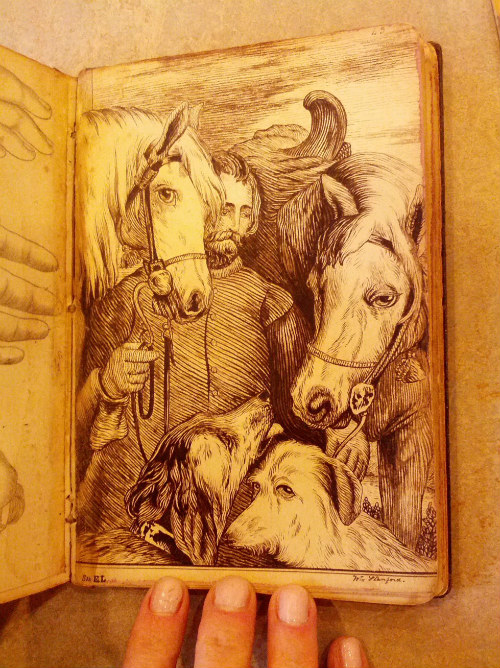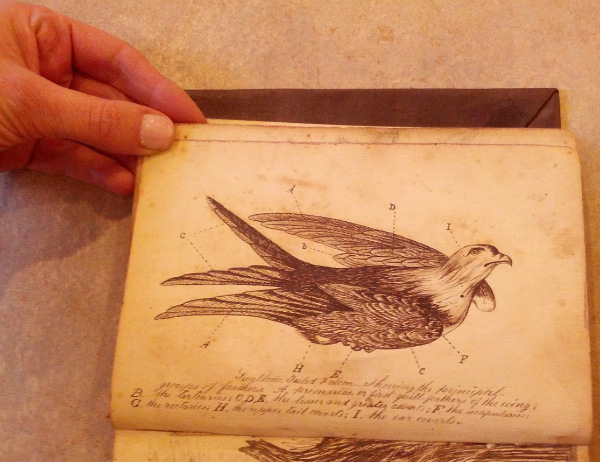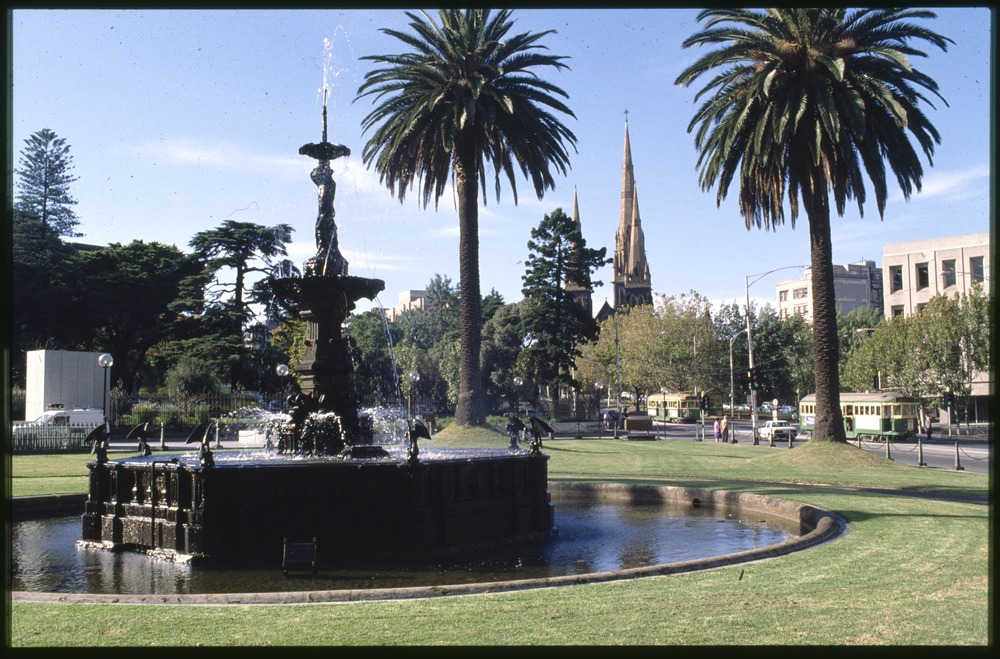A library patron recently led me to a beautiful book containing sketches by the prison artist William Stanford. The patron had an old newspaper article which mentioned the book, but did not give its title. According to the article:
Although shabby, the book (which the writer of this article recently presented to the public library) is a treatise on physics. It is well bound. It has been interleaved with blank paper, and on these leaves are pen and pencil drawings of surprising beauty and craftsmanship – signed William Stanford.
Following clues from the article and advice from colleagues, I found the book in our Manuscripts Collection (MS 9082). The book includes an inscription mentioned in the article, as well as illustrations of birds, ships and designs for fountains:
William Stanford was born in London and trained as a stone mason. He came to Australia in 1852 to work at the diggings, but failed to make his fortune. He was arrested in 1854 for horse stealing, and sentenced to 10 years imprisonment. He was released from prison in 1860, but shortly after was arrested again, this time for horse stealing and highway robbery. He was imprisoned in Pentridge Prison, where his artistic talent was discovered. The prison’s chaplain was able to persuade the governor to grant Stanford access to tools and facilities to develop his skills, and it is reported that he became a model prisoner. While imprisoned Stanford designed and crafted the fountain located at the corner of Spring and Macarthur Streets using bluestone from the prison quarry.
Rennie Ellis, Stanford Fountain, Corner of Spring and Macarthur Streets, Melbourne, H2011.150/3070. Courtesy of the Rennie Ellis Photographic Archive. Pictures Collection, State Library of Victoria.
It took Stanford four years to complete the fountain, and during this time there were several appeals for his release from prison. He was eventually released in October 1870 and continued to work as a monumental mason. Sadly he died only 10 years later, due in part to inhaling the dust while working on the fountain.
Written by Debra Hutchinson
Librarian, Australian History and Literature Team
Photographs of MS 9082 by Katie Flack
Collections Coordinator, Australian History and Literature Team






Wow! His work is beautiful. How sad that he experienced so little freedom, imagine what he could have achieved as a free man. Thanks for sharing this!